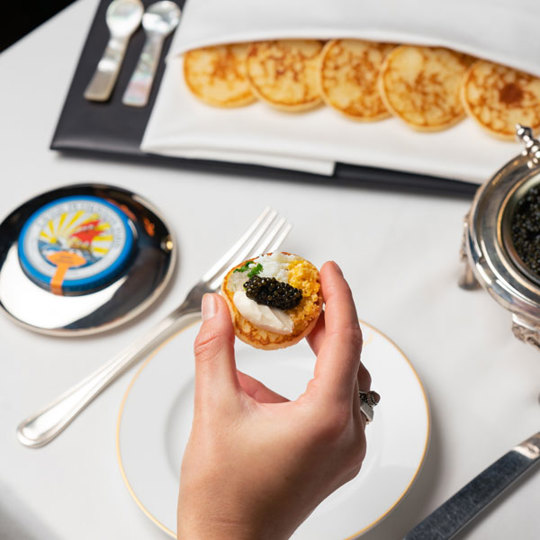In the latest instalment of the Corrigan’s Guide to Caviar, we’re tackling the wide world of serving – what to use, how to use it and why!
Now that you’re clued up on the types of caviar – did you serve Caviar with a metal spoon at your last dinner party, to looks of horror from your guests? Corrigan’s are here to help! The delicate taste and texture of Caviar require specific tools, to allow you to enjoy its most unadulterated simplicity. Heres what we recommend for serving your Caviar, from Tin to Table.
Why the spoon matters
A caviar spoon. Whilst it might seem like a small aspect of Caviar service, there’s much more than meets the eye when considering this handy tool. Choosing the wrong serving implement can massively affect the flavour and experience of the service, as well as getting you some judgemental looks from those in the know!
It might sound like an old wives tale but if you’ve ever made the mistake, you know that eating caviar with a metal spoon is a mistake! The reason caviar and metals don’t mix, is due to the oxidation which happens when metal comes into contact with this sensitive ingredient. The oxidation reaction can happen quickly, so even caviar that has been briefly served with a metal utensil will have a strong metallic flavour imparted onto the eggs.
As for the metal tins they come in – non-reactive linings are put into place to prevent any adverse effects. A damaged tin could disrupt this lining and shouldn’t be eaten – as well as for many other reasons!

The go-to for any restaurant or caviar professional is a Mother of Pearl spoon. This is what you will have seen in any films, adverts and images – and it is used for both its material and for the aesthetics!
Mother of Pearl, also known as Nacre, is a unique material made from organic and inorganic compounds. It’s produced as an inner shell layer by molluscs, made of amazing hexagonal plates of calcium carbonate. As the name suggests, its this material that pearls are ultimately made of, after a small piece gets trapped within an oyster shell.
When crafted into a small spoon for use with caviar, the bright, white iridescent material creates a wonderful contrast against the dark grey, black and green of caviar pearls. Strong and reliable, and crucially non-reactive, a Mother of Pearl spoon enhances a caviar service in more ways than one.
So, when you’re asking what spoon to use for caviar, rest assured that a metal spoon is a no-go. Instead, opt for the perfect caviar spoon, which ensures a truly authentic experience.
Now that you’ve narrowly avoided embarrassment at your next dinner party, head down to Corrigan’s Mayfair and our sister London restaurant, Bentley’s Oyster Bar and Grill to enjoy a caviar service to the highest standard—served, of course, without a caviar metal spoon! We’ll be back with the next instalment in our Caviar Breakdown soon 🐟